Operations management: is it the key to achieving business hyper-efficiency?
Blog: Monday Project Management Blog
The basic definition of an operation is “transformation.” You take different resources — raw material, time, capital, labor, etc. — and transform them into a final product or service.
The sum of all your operations makes up the system that keeps your business running.
And the simplest way to improve your business is by working on those operations.
But you need a strategic approach.
In this article, we’ll introduce the concept of “operations management” and show you why — and how — it can help you become more effective and efficient.
What is operations management?
A business operation is a set of activities that create value by transforming inputs into outputs.
Operations management is the practice of planning, controlling, organizing, and directing these different operations to achieve the highest level of efficiency within your organization.
You take the principles of traditional business administration and apply them to your operations.
Some of these principles include:
- Planning: planning and designing mission-critical activities within an organization.
- Organizing: organizing and coordinating operations to maximize production efficiency.
- Staffing: defining specific talent profiles to perform different operations.
- Directing: leading and directing the execution of the different operations of an organization.
- Controlling: monitoring compliance during the execution process.
A central goal of operations management is to improve and optimize the resources needed to produce a specific product or service.
More specifically, it aims to improve 4 areas:
- Quality: improving the quality of the products and services of your business
- Quantity: increasing production while using fewer resources
- Time: transforming inputs into outputs in less time
- Cost: reducing the costs involved in the production process

Why is operations management crucial for modern organizations?
Now that you understand the basics of operations management, let’s explore the advantages of adopting this discipline in your business.
- Better products and services: when you have clear operations and processes, you’re able to produce better products and services.
- Increased revenue: reducing costs and improving your services leads to more revenue for your business.
- Improved collaboration: transparent procedures foster cross-team collaboration.
- Regulatory compliance: defining clear policies, rules, and guidelines helps your team be more compliant and accountable.
- Better positioning: a solid operations system may become a true competitive advantage.
- Overall improvements: at the end of the day, achieving operational excellence will improve your overall performance.
What does operations management look like in the real world?
To emphasize the concept of operations management, let’s cover a few real-world examples from different industries.
Manufacturing
Let’s imagine that you own a car manufacturing company.
To build a car, you need different components: chassis, wheels, engine, seats, and windows, to name a few.
To manufacture a chassis, you need to reshape the metal with a machine. A person probably operates that machine.
You take a piece of metal and turn it into a chassis, which is then assembled on a car.
Each step in this manufacturing process can be considered an operation.
An operations manager would be responsible for overseeing and managing these operations to ensure regulatory compliance and maximize productivity and efficiency.
A solid operational performance would lead to more cars in less time while using fewer resources.
Retail
If you own, say, an online store, some of the most common operations would include:
- Inventory management
- Customer service
- Product design
- Logistics
- Supply chain management
- Shipping and handling
- Order processing
The end goal is to satisfy the customer.
So, the operations manager needs to make sure all of these operations are being performed timely and effectively. For example, orders are being processed and shipped immediately after a customer completes a purchase.
Services
Let’s say that you’re an operations manager at a large digital marketing agency.
This agency specializes in helping dentists get new clients. To do this, your team must complete the following operations:
- Client onboarding
- Strategy design
- Marketing material development
- Facebook marketing campaign development
- Creative design
In this case, your job is to manage those operations to ensure your clients actually get the results they’re expecting.
In other words, operations management is directly tied to the customers and aims to maximize the value you provide by optimizing your operations.
How to make your business’s operations management more efficient
At this point, you already understand what operations management is, why it matters, and what it looks like in the real world. Now the question is, how can you implement it for your business?
Let’s cover a few ideas:
Define clear milestones and KPIs
As with anything in business, your operations system should be goal-driven. You must set clear, tangible goals that help you measure progress.
Otherwise, you won’t be able to know whether you’re doing a good job.
- Is the team complying with established regulations and policies?
- Are employees performing as expected?
- Are your customers happy with the service you’re providing?
- Are you using resources effectively and efficiently?
The answers to these questions might provide you with valuable insights into the different goals you can set to measure the performance of your operations.
We suggest you also look for solid project management software to monitor these milestones.
For example, with monday.com’s data dashboards, you can easily track whether you’re meeting your objectives.
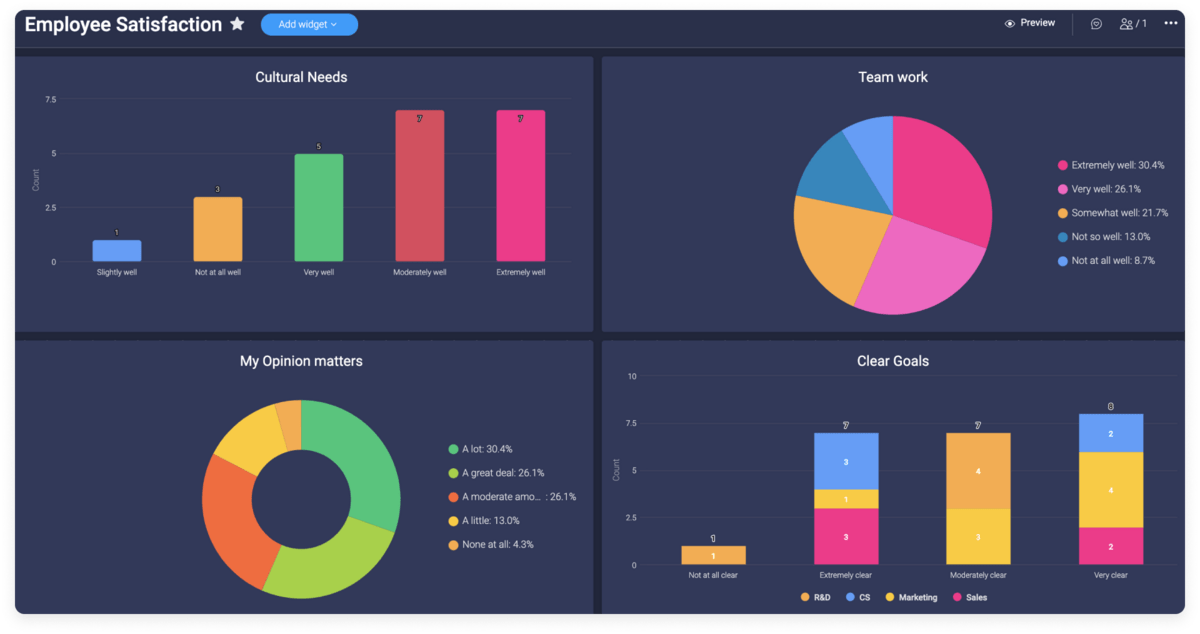
These dashboards are fully customizable, and you can use them to track any type of data, including:
- Employee performance
- Teamwork
- Revenue
- Sales
- Complaints
- Customer success
And any other crucial metric for your organization.
This way, you’re better able to understand which operations need most of your attention, as well as identify what you’re doing right.
You can even share these dashboards with clients, managers, and stakeholders and keep everyone involved in the management process.
Tap into automation
One of the fastest ways to optimize an operation is by tapping into AI.
By automating repetitive work, you can repurpose otherwise wasted time into more productive initiatives for your business.
Research suggests that 3 out of 10 operations can be fully automated in 60% of occupations.
A few decades ago, automation was exclusive for companies with deep pockets.
Nowadays, a modern Work Operating System (Work OS) allows any type of business to automate its work at a fraction of the cost.
For instance, with monday.com, you get access to an automations center capable of automating over 250,000 human actions.
You can “build” automation recipes to streamline:
- Repetitive tasks: automate all your repetitive work and focus on more productive activities.
- Notifications: notify team members whenever specific actions are completed.
- Deadlines: set deadlines based on events and triggers.
- Item creation: create items automatically using conditional data.
- Custom: create custom automation recipes to streamline any type of operation.
This gives you all the flexibility you need to optimize even the most complex of processes.
To learn more about monday.com’s automations, we suggest you take a look at this short video overview:
Remove silos between departments
Operations management is a collaborative discipline.
Your team must be involved throughout the whole process.
They must understand the different policies, regulations, rules, processes, and operations within your organization. Otherwise, you’ll struggle with compliance.
To communicate these different documents, you need a system that helps you centralize your information into one place.
With monday.com, for instance, you can invite your entire team to work and collaborate under the same platform in just a couple of clicks.
You can also use our digital asset management template to share vital documents with team members and keep everyone on the same page.
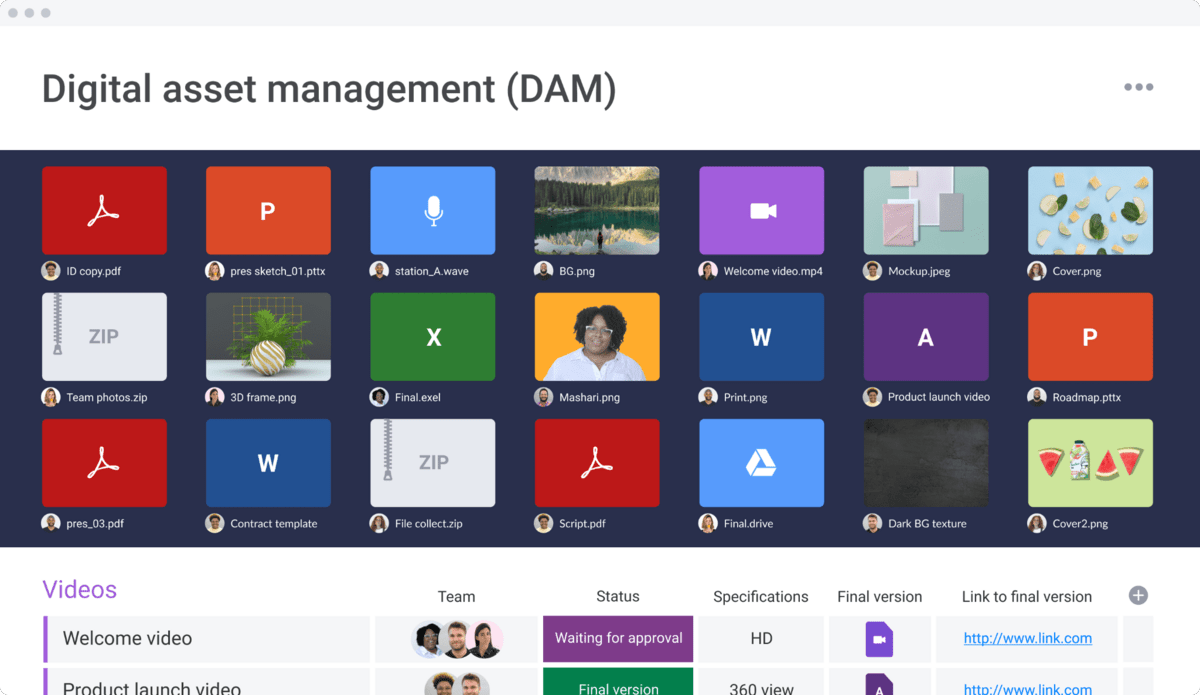
This level of transparency is especially helpful for modern organizations that deal with hybrid work models.
Pay special attention to governance
Governance refers to the practices you have in place to enforce organization-wide compliance.
To effectively govern your team, you need a platform that gives you more control over what your team does and when they do it.
For example, with monday.com, you get access to an activity log where you can explore the complete history of changes to important documents.
You also get access to an audit log that helps you analyze relevant information about your security. You can see which members logged into your account, what they did, and oversee any suspicious activity.
These different tools give you all the control you need to keep your team compliant.
How to optimize different operations in different departments of your business
Optimization is a crucial step in operations management.
By analyzing your operations and identifying improvement opportunities, you can get rid of needless steps in your processes, add value to your products and services, and increase your overall efficiency.
The first step is defining the different components of your operations and streamlining the flow of activities visually.
This way, you’re able to better communicate each operation to team members and quickly spot inefficiencies.
The good news?
At monday.com, we’ve done the legwork for you.
We created over 200 templates for different processes and operations in all departments for your organization.
These templates are fully customizable and can help you manage your operations with ease.
Below, you can find some of the most popular.
Human resources operations
In human resources, operations management coordinates the day-to-day activities involved in the employee lifecycle, such as recruitment, onboarding, performance management, etc.
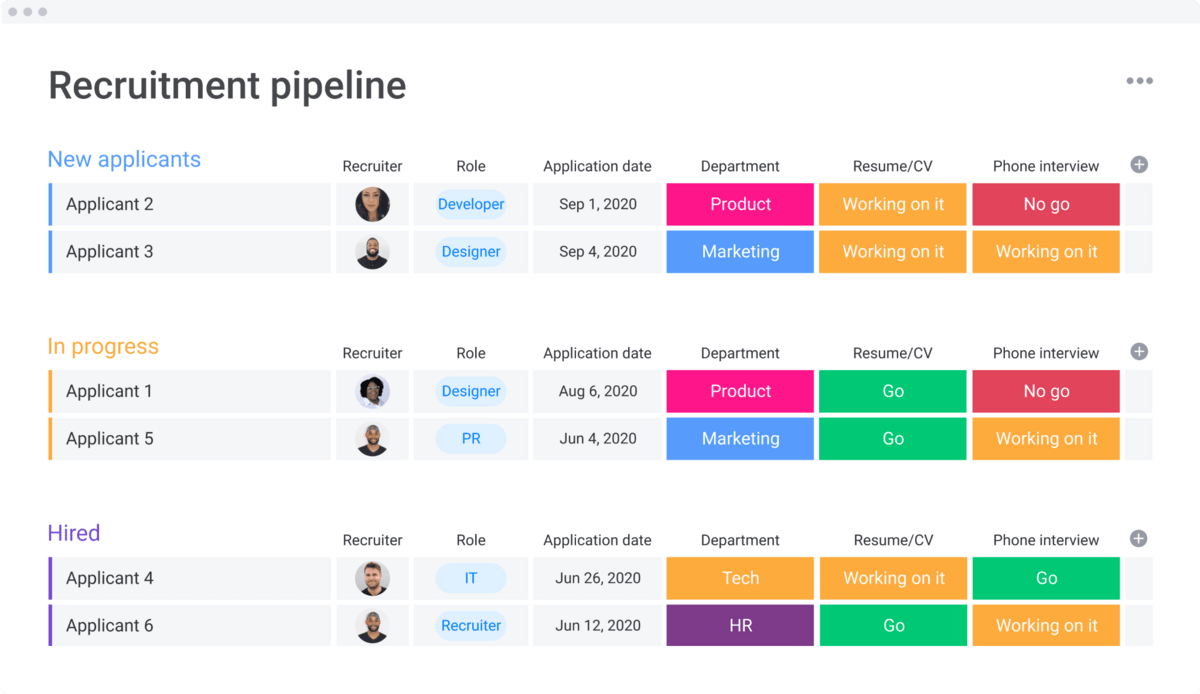
Some of our most popular HR templates include:
- Recruitment: streamline your recruitment operations in a centralized space.
- HR requests: store, manage, and track all your HR requests with ease.
- Employee onboarding: manage your onboarding process from pre-arrival to introductions.
Marketing operations
The goal of marketing is to effectively communicate the value of your organization’s products and services. So, operations management is responsible for designing, monitoring, and enforcing the different activities that make that possible.
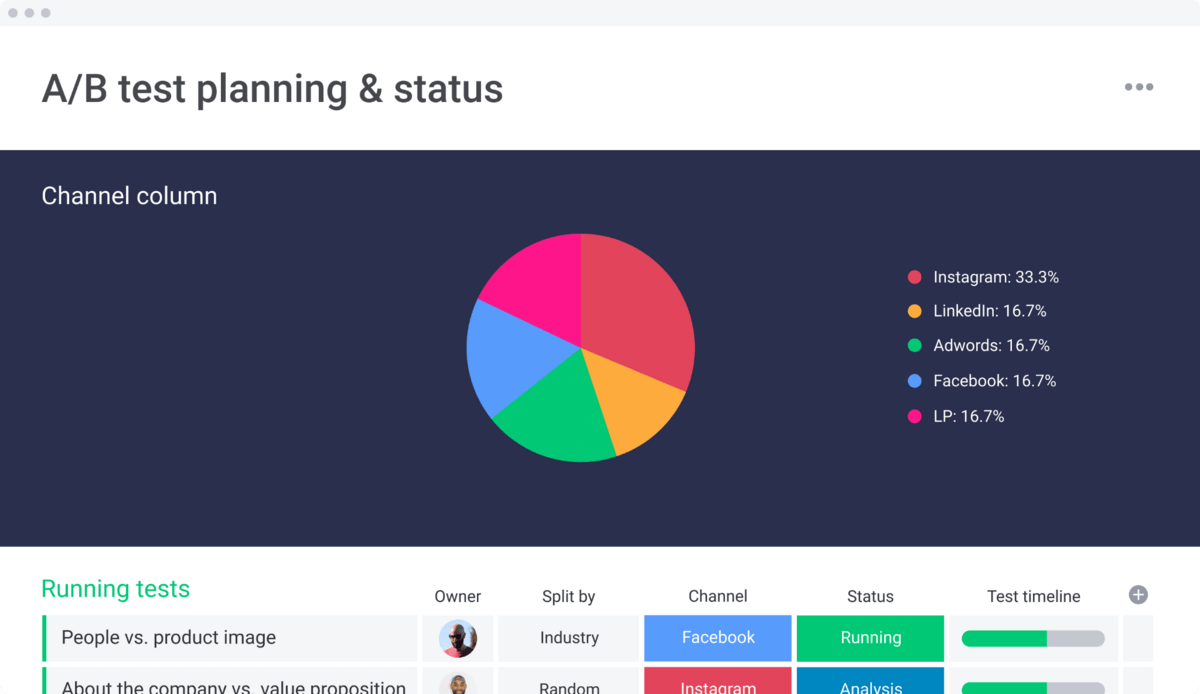
Some of the most popular monday.com’s marketing templates are:
- A/B testing: organize and manage your different A/B test campaigns and results in one place.
- Marketing planning: get rid of spreadsheets and develop better and more organized marketing plans.
- Budget planning: plan your marketing budgets and get more control over your finances.
Sales operations
Sales operations involve all the activities that are directly related to turning prospects into customers, including the after-purchase experience.
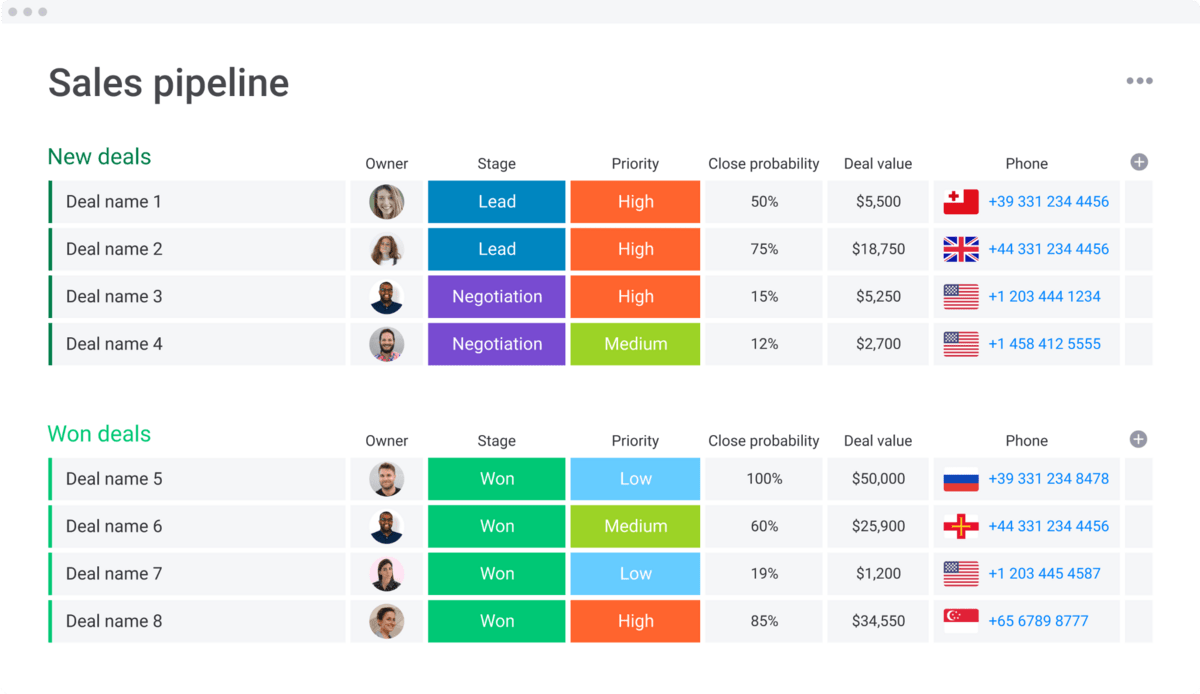
monday.com’s top sales templates include:
- CRM (Customer Relationship Management):this visual template stores new leads, tracks your sales pipeline, and manages client relationships.
- Supporting sales materials: keep all your sales-related documentation handy for everyone on your sales team.
- Customer projects: get a complete overview of all your customer projects in one place and improve collaboration with teammates and stakeholders.
Customer support operations
The customer base is one of the most valuable assets of any business.
For that reason, customer service aims to provide the best customer experience and help solve any product-related issue with efficiency.
Any activity that involves engaging and taking care of customers can be considered a customer service operation.
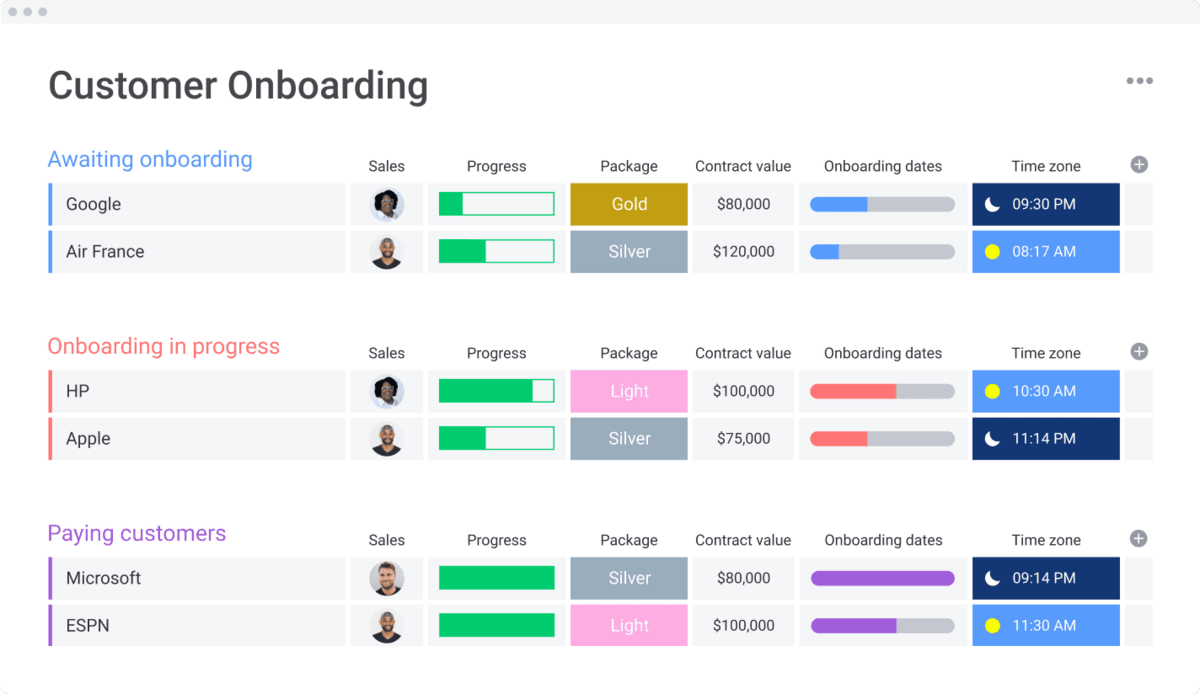
Here are some of the most popular monday.com’s customer service templates:
- Contact management: manage all your contact details, including contact information and interactions.
- Digital asset management: manage critical documents in one place and solve customer issues much faster.
- Customer onboarding: streamline your customer onboarding process and provide a smooth experience from the beginning.
Operations management optimization in action: 3 real-world examples
When implemented right, operations management can drive surprising results for your organization.
And it’s not just us saying that.
Let’s explore how 3 companies in different verticals experienced massive improvements by optimizing their operations.
Genpact improved cross-team collaboration by 40%
Genpact is a renowned professional services firm that helps Fortune 500 organizations develop digitally-enabled intelligent operations.
Before using monday.com, Genpact’s marketing team relied on a large volume of spreadsheets to manage their campaigns, which wasn’t efficient.
With so many documents, the team was struggling to get the level of visibility and transparency they needed.
The solution?
Genpact used monday.com to build a centralized workspace where the team could visualize, edit, and track documents through one platform.
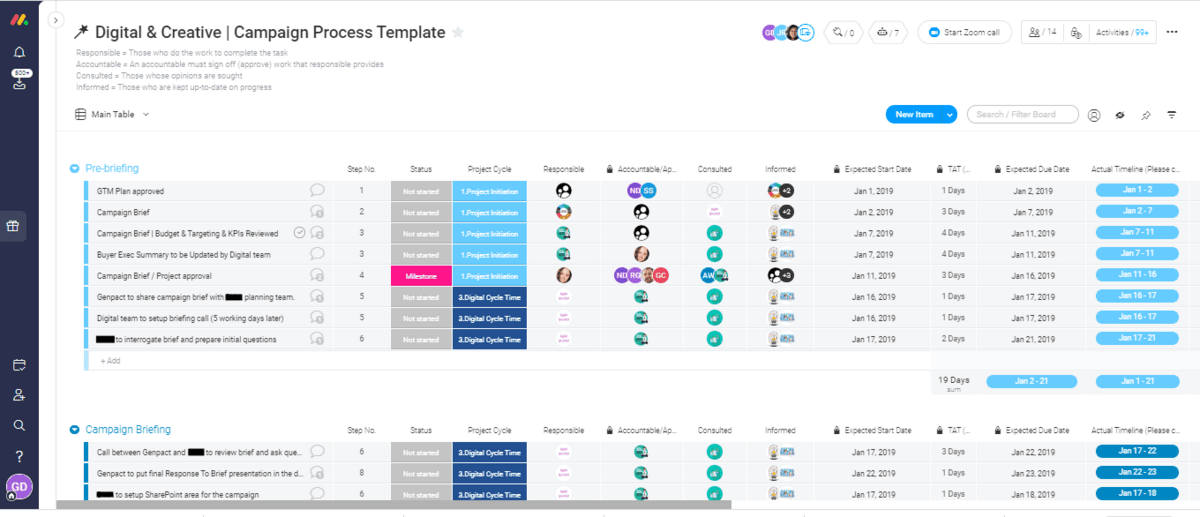
Not only that, but Genpact used monday.com’s advanced features to streamline its operations and speed up work.
Some of these features include:
- Automations: the ability to automate more than 250,000 tasks in just a couple of clicks.
- Project management: features to manage the entire project lifecycle.
- Business analytics: powerful reporting dashboards to measure the progress of any task or project.
- Customizations: a fully customizable interface to streamline any type of business process or operation.
- Governance: solid governance features to get more control over what your team does.
Doing this helped Genpact get rid of siloed information and improve cross-team collaboration by 40%.
You can read more about Genpact’s experience here.
Falkbuilt went from 0 to $1.3 million in project revenue in less than a year
Falkbuilt is a large construction company based in Canada.
Before monday.com, Falkbuilt was facing a huge challenge. It couldn’t figure out how to “build a bridge” between the main office and the production floor.
It wanted to get new project requests to the right people at the right time but didn’t have the necessary infrastructure to do it.
That’s why Falkbuilt adopted monday.com.
With monday.com, Falkbuilt’s team was able to streamline the entire project requests process while automating over 40,000 human actions.
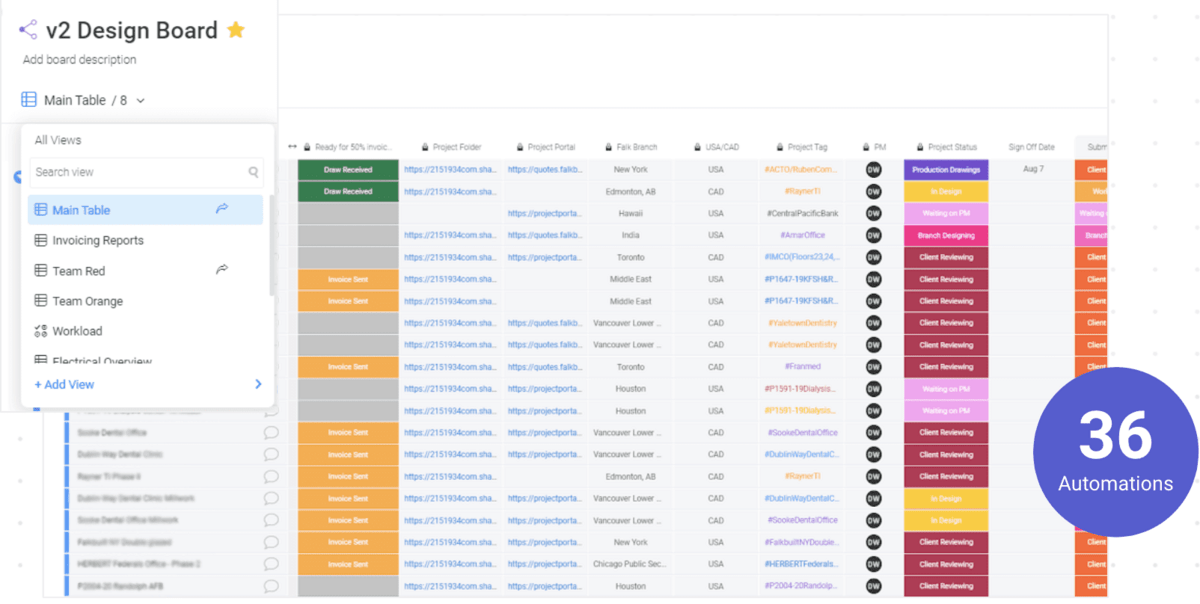
This change significantly increased Falkbuilt’s capacity, which allowed it to collect $1.3 million in project revenue in less than a year.
Learn more about Falkbuilt’s complete story here.
M Booth increased deliverables by 49%
M Booth is a popular digital communications agency with offices in New York and San Francisco.
In the beginning, it used different project management tools to manage its clients and projects, but as the team started to grow, overseeing the increasing volume of work became a true challenge.
Every month, the team handles over 400 requests from 30+ strategists.
Managing all this work from many different places isn’t a great practice.
To solve the problem, they used monday.com to centralize all these requests into one place and automate repetitive work. monday.com also helped them estimate costs with more accuracy and collaborate on projects much faster.
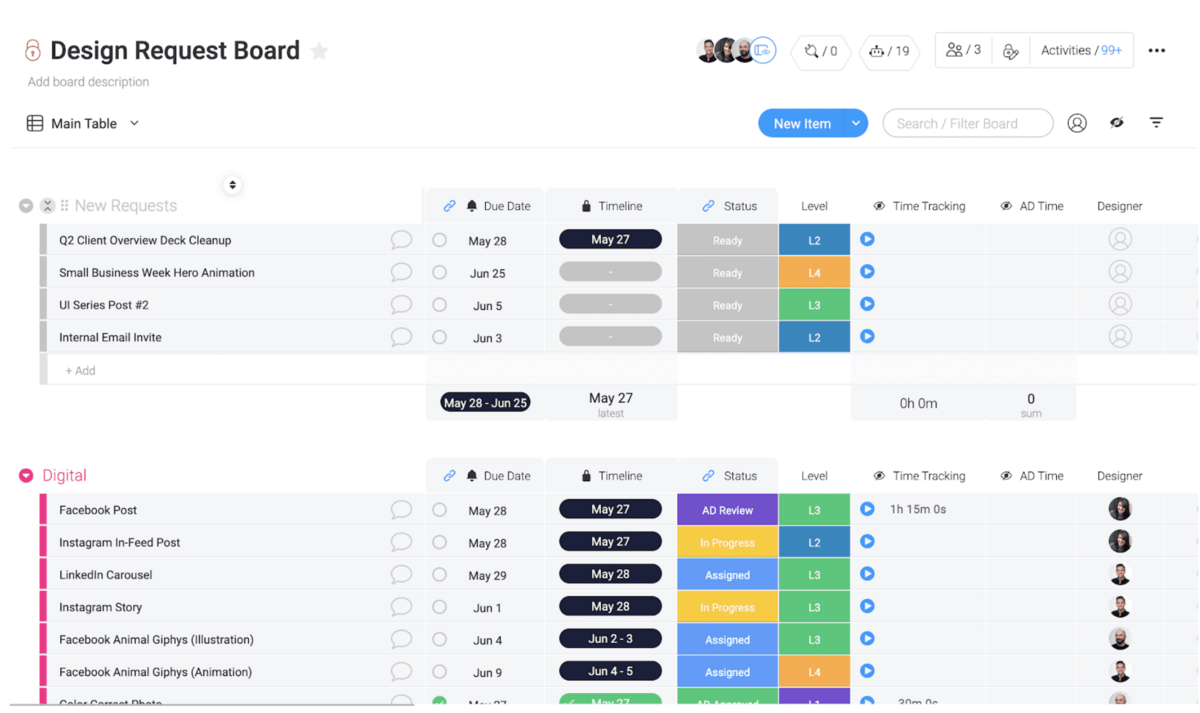
After these changes, M Booth was able to increase deliverables by 49%.
You can read the complete story here.
It’s time to get more control over your operations
Operations management is an essential practice for modern organizations.
When you constantly oversee, coordinate, and optimize the different operations in your business, you’re able to save time, reduce costs, increase sales, and spot improvement opportunities in different areas.
The best way to start is by choosing the right platform — one that’s easy-to-use, flexible, and helps you manage any kind of operation.
For instance, with monday.com’s advanced project management template, you can quickly streamline your operations and collaborate with your team under one roof.
Try monday.com today and see for yourself.
The post Operations management: is it the key to achieving business hyper-efficiency? appeared first on monday.com Blog.
Leave a Comment
You must be logged in to post a comment.








